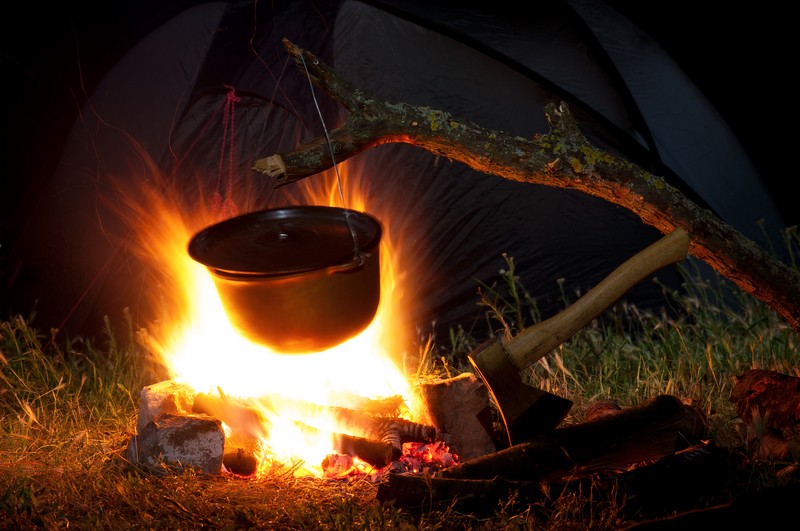A campfire is a great source of light and heat in a survival situation – but it is only a short-term fix and it is both inefficient and hard to maintain.
Having a range of options that are more sophisticated makes a longer term solution that is more efficient and easier to heat; here are a few options.
Wood Stoves
Creating a homemade wood stove for camping is as simple as setting up a windscreen over a pile of wood and then placing rocks on top of the windscreen.
Pots are placed on the rocks for heating.
Hobo Stoves
Find a tin paint or food can and cut six holes in it — three holes at the top of the can and three near the base. The holes encourage airflow within the can, making the fire inside intensely hot. Load the can with wood, paper, leaves or anything else that’s combustible.
Plumber's Stove
You need an empty 8-ounce paint or stain can, a bag of cotton balls, alcohol fuel, a radiator hose clamp, sheet metal snips and a 3-inch-wide-by-12-inch-long strip of thin gauge steel. Clean the inside of the can with paint thinner, soap and water. The cotton balls go in the can and the metal strip goes around the outside of the rim. The metal, with an area cut away to allow airflow, acts as a windscreen for the fire. The radiator hose clamp secures the metal in place.
A heat source in all but the most hybrid of survival situations at least is a morale builder – at most, it can be a life saver.
While you can always rely on a campfire, they are very inefficient and hard to maintain – these options burn hotter and are more efficient.
And best of all, they can usually be constructed from debris and materials you can locate in just about any environment.
To learn more about these stoves and other options, please visit eHow.
